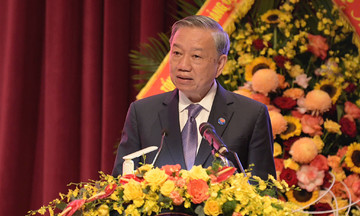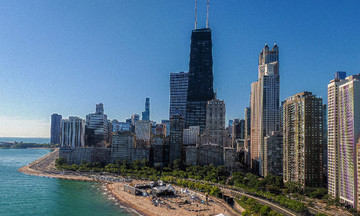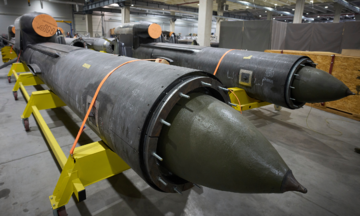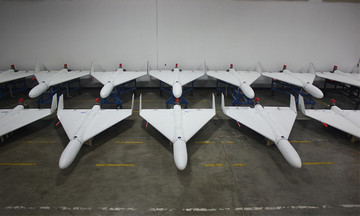Ukraine is dramatically increasing attacks on Russian refineries, driving domestic gasoline prices to record highs, despite Moscow's export ban aimed at addressing shortages. Statistics show that in August alone, Ukraine launched at least 10 drone strikes against key Russian energy infrastructure, including refineries, pumping stations, and fuel tankers. According to Ukrainian intelligence, the targeted refineries have a combined annual output capacity exceeding 44 million tons, representing over 10% of Russia's capacity.
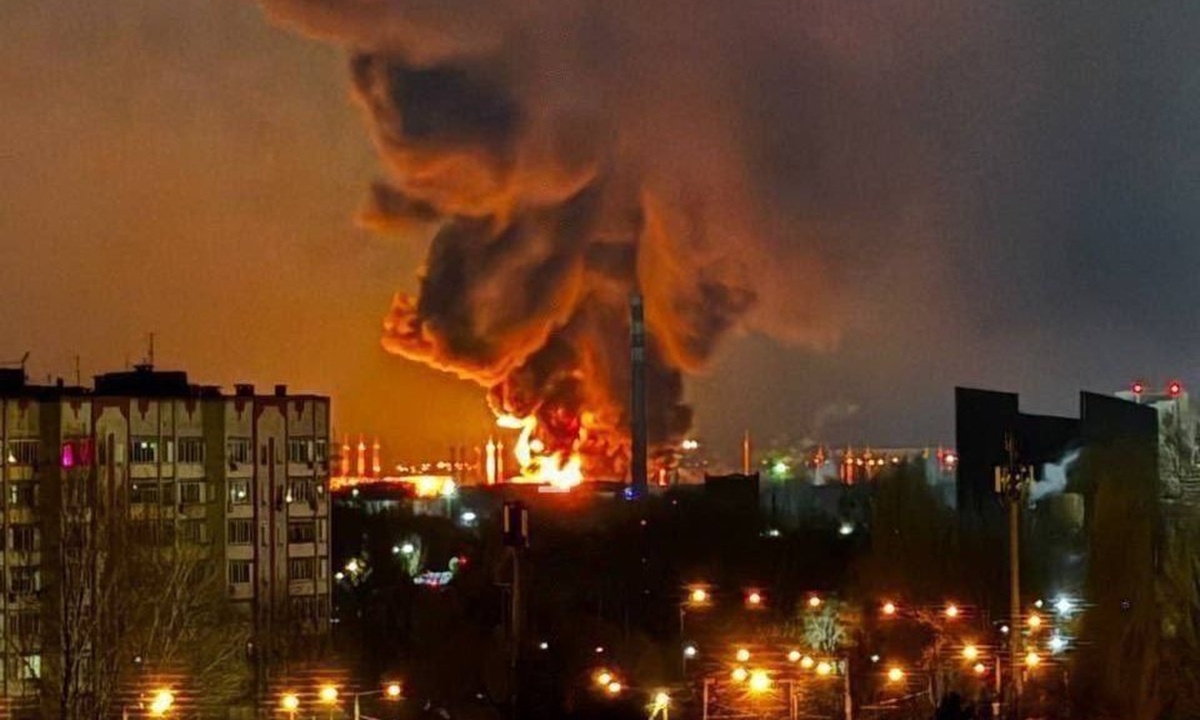 |
A large fire erupts from an oil depot in Engels, Russia, after a Ukrainian drone strike last January. Photo: X/AKamyshin |
A large fire erupts from an oil depot in Engels, Russia, after a Ukrainian drone strike last January. Photo: X/AKamyshin
Experts say Ukraine's strategy aims to maximize damage to Moscow's war funding and disrupt Russian daily life when fuel demand peaks for drivers and farmers.
Among this month's targets is Lukoil's massive Volgograd refinery, the largest in southern Russia. On 14/8, witnesses reported multiple fires erupting from the plant. The Russian Defense Ministry acknowledged damage at the site, which was attacked again on 19/8.
A major refinery in Saratov, southern Russia, was also attacked earlier this month. According to Robert Brovdi, commander of Ukraine's drone systems, fires continued to burn on 23/8 at another refinery in the Rostov region, more than two days after it was targeted.
Gasoline shortages have been reported in parts of Russia and Crimea. Crimean Governor Sergey Aksyonov attributed the situation to "logistical issues," adding that authorities are "taking all possible measures to acquire sufficient fuel and stabilize prices."
An activist with the Yellow Ribbon, a pro-Ukraine group in Crimea, said the most common type of gasoline has disappeared from the peninsula, seemingly due to Kyiv's ongoing UAV attacks on Russian energy facilities.
Despite government subsidies, Russian consumers are paying more for gasoline. Wholesale gasoline prices on the St. Petersburg exchange have risen nearly 10% in the past month and approximately 50% since the start of the year. Russian consumers bear the brunt of these increases, with the Far East region hardest hit. Analysts predict prices won't decrease for at least another month, even with Russia's export ban imposed late last month to prioritize domestic needs.
"Unfortunately, our current forecast is not favorable. We'll likely have to wait at least another month for gasoline prices to drop," Kommersant quoted Sergey Frolov, a senior manager at the consulting and market research firm NEFT Research, as saying.
However, Russian military logistics are less affected, as their primary need is diesel, the supply of which remains relatively stable.
Ukrainian military and intelligence agencies continue to develop long-range attack strategies using UAVs, missiles, and sabotage, despite facing Russian ground pressure. Last month, the Ukrainian military claimed such attacks have inflicted USD 74 billion in damages on Russia since the start of the year, with nearly 40% occurring at least 500 km inside Russian territory.
A fire allegedly at the Unecha oil pumping station in Bryansk province, Russia, in a video released on 22/8. Video: Robert Brovdi
While this information cannot be independently verified, observers note substantial visual evidence of damage to Russian refineries, storage tanks, and pumping stations in recent months. Repairs are complicated by Western sanctions restricting Russia's access to spare parts and equipment.
In a report on 21/8, Ukrainian foreign intelligence stated that Russian companies are rushing to buy oil from Belarus to address domestic shortages. The Belneftekhim refinery in Belarus reported a "surge" in Russian demand for its petrochemical products last week.
Ukraine is also targeting Russian crude oil exports. Last week, Ukrainian UAVs attacked the Druzhba pipeline, which supplies Russian oil to Hungary and Slovakia.
Both countries complained to the EU, arguing that such Ukrainian attacks primarily harm Hungary and Slovakia, not Russia. Former US President Donald Trump intervened, sending a handwritten letter to Hungarian Prime Minister Viktor Orban expressing his "anger" over the disruption.
However, for Ukraine, facing pressure on the front lines, attacks on Russia's vital energy sector counter Moscow's claims of eventual victory.
Ukraine is bolstering its long-range weaponry, recently unveiling the domestically produced "Flamingo" cruise missile with a range of up to 3,000 km. The manufacturer aims to produce 200 missiles monthly.
An oil depot in Sochi, Russia, burns intensely after a Ukrainian UAV attack on the morning of 3/8. Video: X/Exilenova_plus
Missile expert Fabian Hoffman notes that with a blast radius exceeding 38 m, the Flamingo missile can inflict significant damage on soft targets like refinery distillation towers.
"Each 1,150 kg warhead Flamingo missile, upon hitting its target, will cause far greater damage than Ukraine's existing weapons," observed Mick Ryan, author of the Futura Doctrina military blog.
"While not a miracle solution, it will enhance Ukraine's ability to damage Russian energy infrastructure," he said, adding that protecting all refineries across its vast territory presents a significant challenge for Moscow.
Analysts doubt Ukraine's attack strategy will completely deplete thousands of Russian gas stations. However, they believe the disruptions will exacerbate already high inflation, making it harder for the Kremlin to control prices and secure supplies, significantly impacting Russian public sentiment towards the war.
Vu Hoang (According to CNN, AFP, Reuters)




